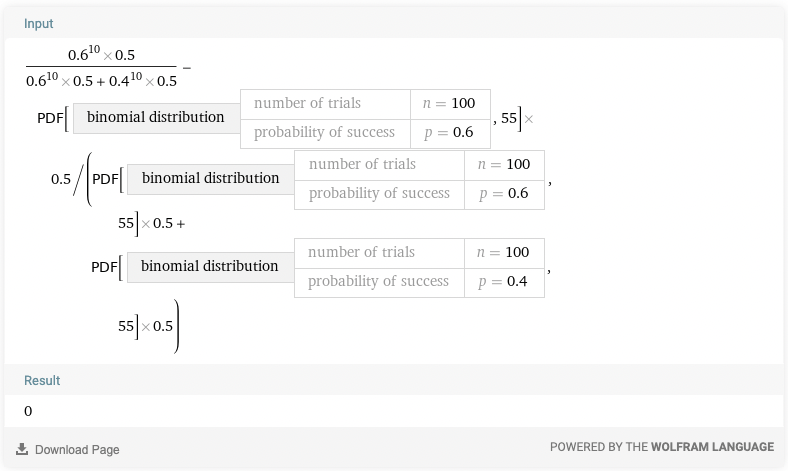Puzzle time - bias evidence
General Discussion
5
Posts
3
Posters
47
Views
-
Years ago Alice bought a special coin from a magic shop which was supposed to flip heads with probability 60%, or was it tails? She's forgotten which.
Alice flips the coin 10 times and it comes up heads every time, so she decides it was probably biased toward heads.
Unbeknown to Alice, Bob bought (another copy of) the same coin, and also forgot which way it was biased. With lots of time on his hands, he flips the coin 100 times and gets 55 heads. Like Alice, he decides to treat it as heads-biased.
Of Alice and Bob, which one actually had the best evidence that the coin was biased toward heads?
